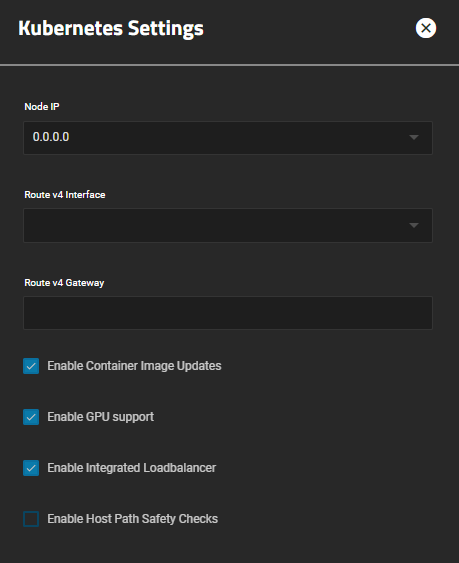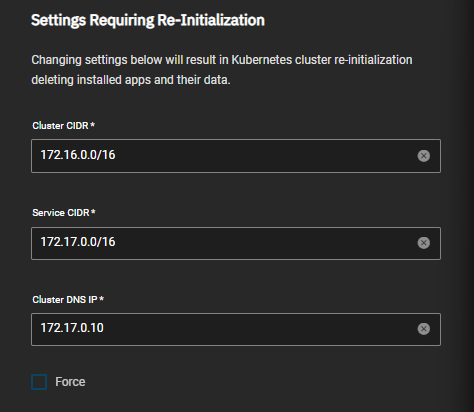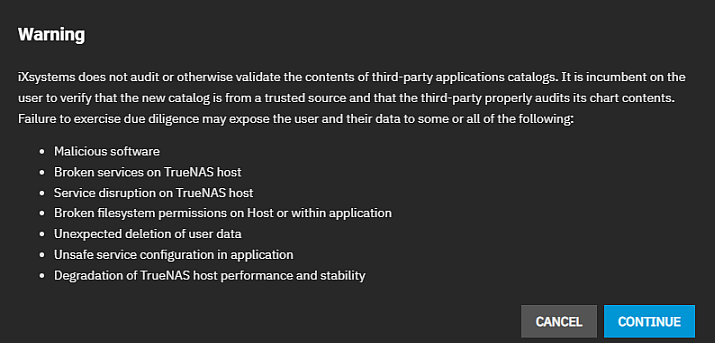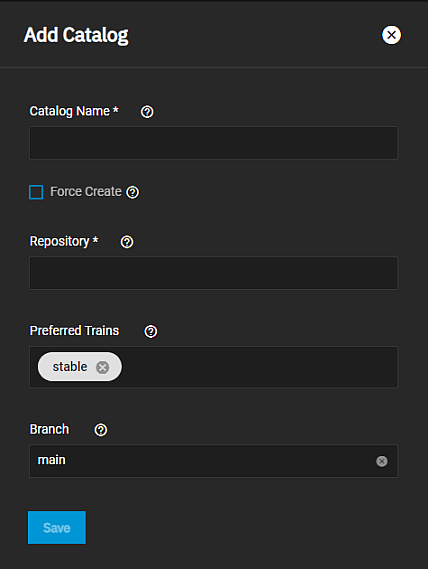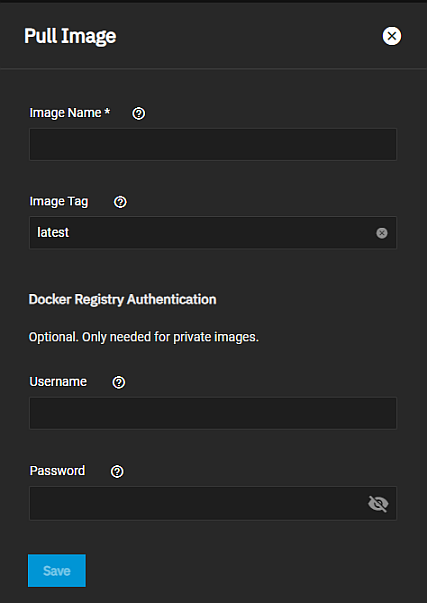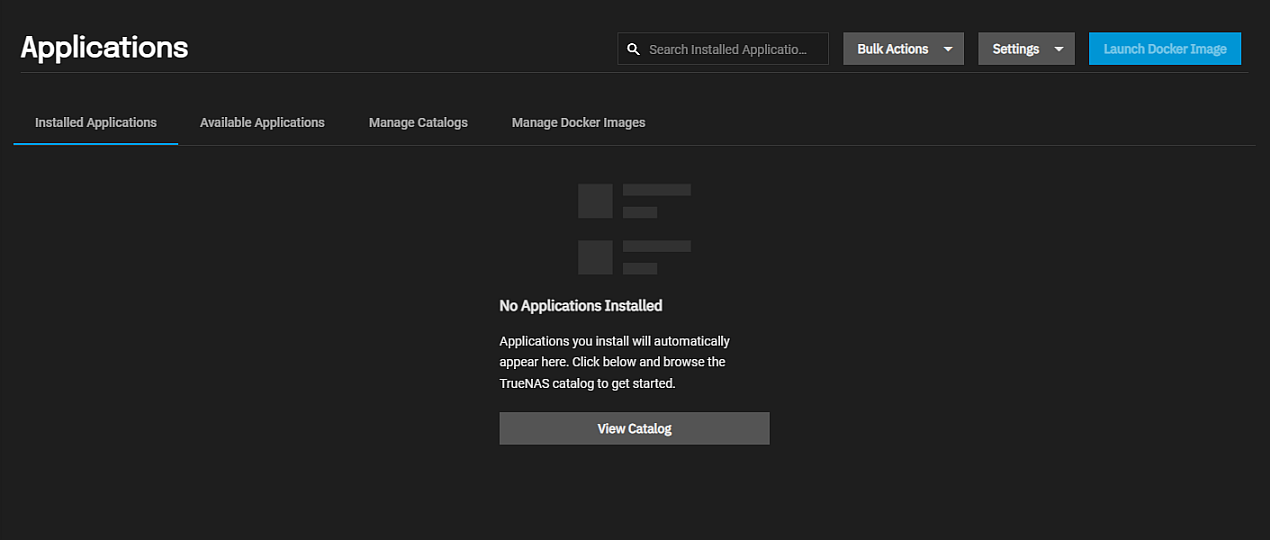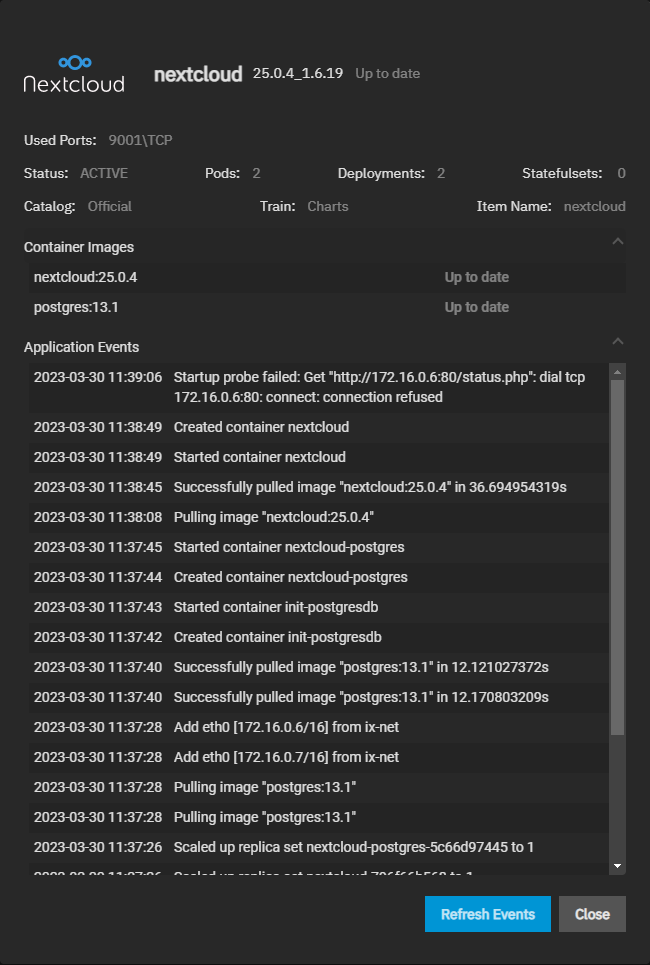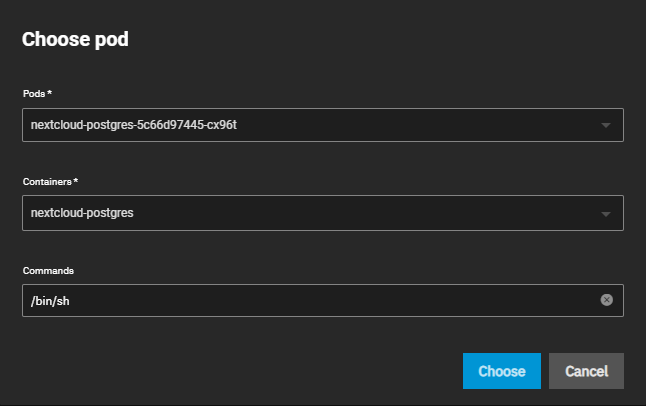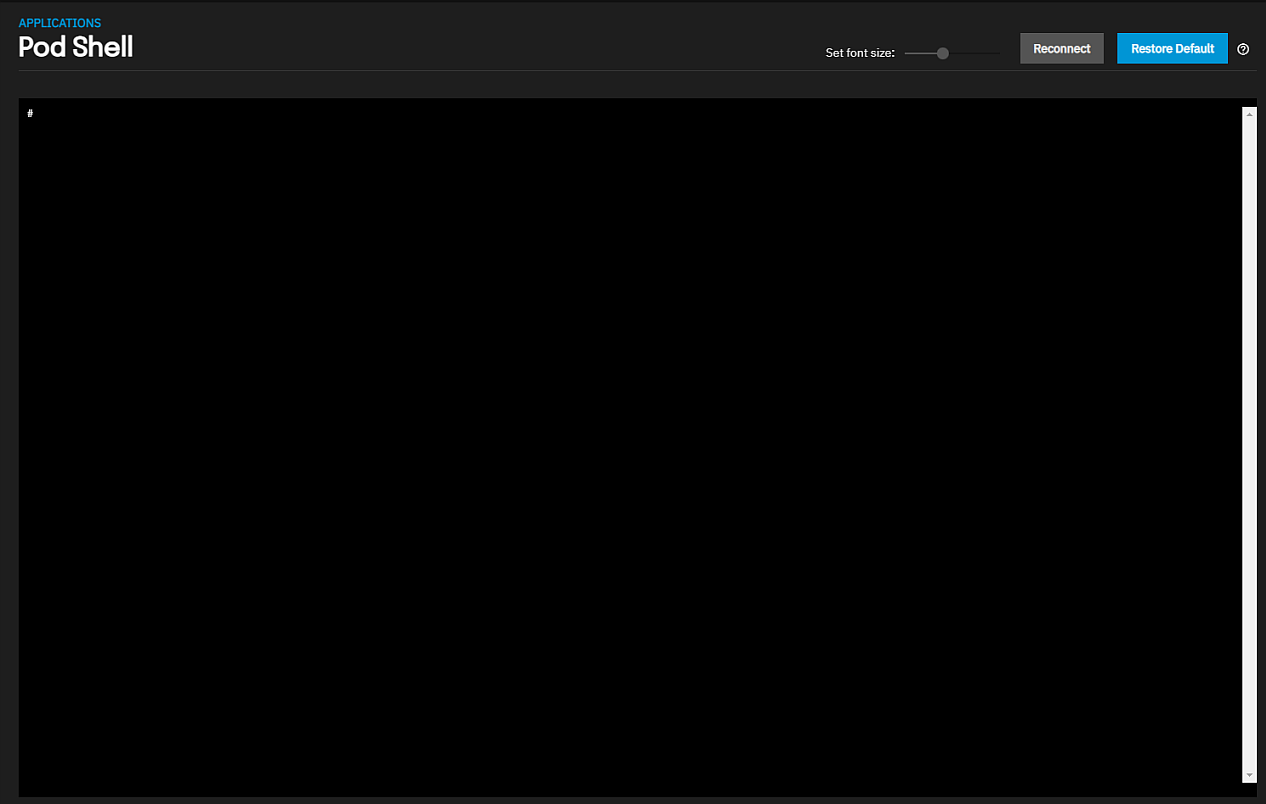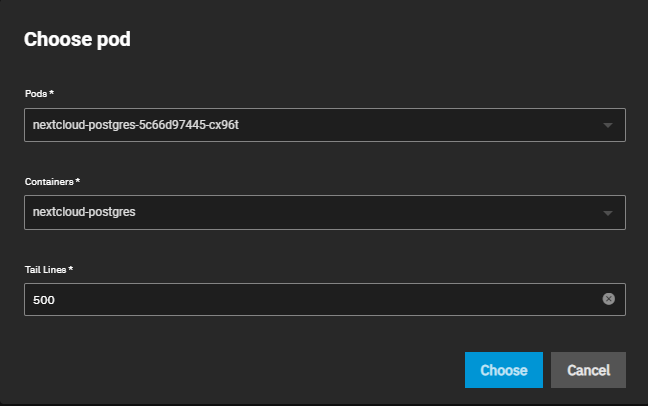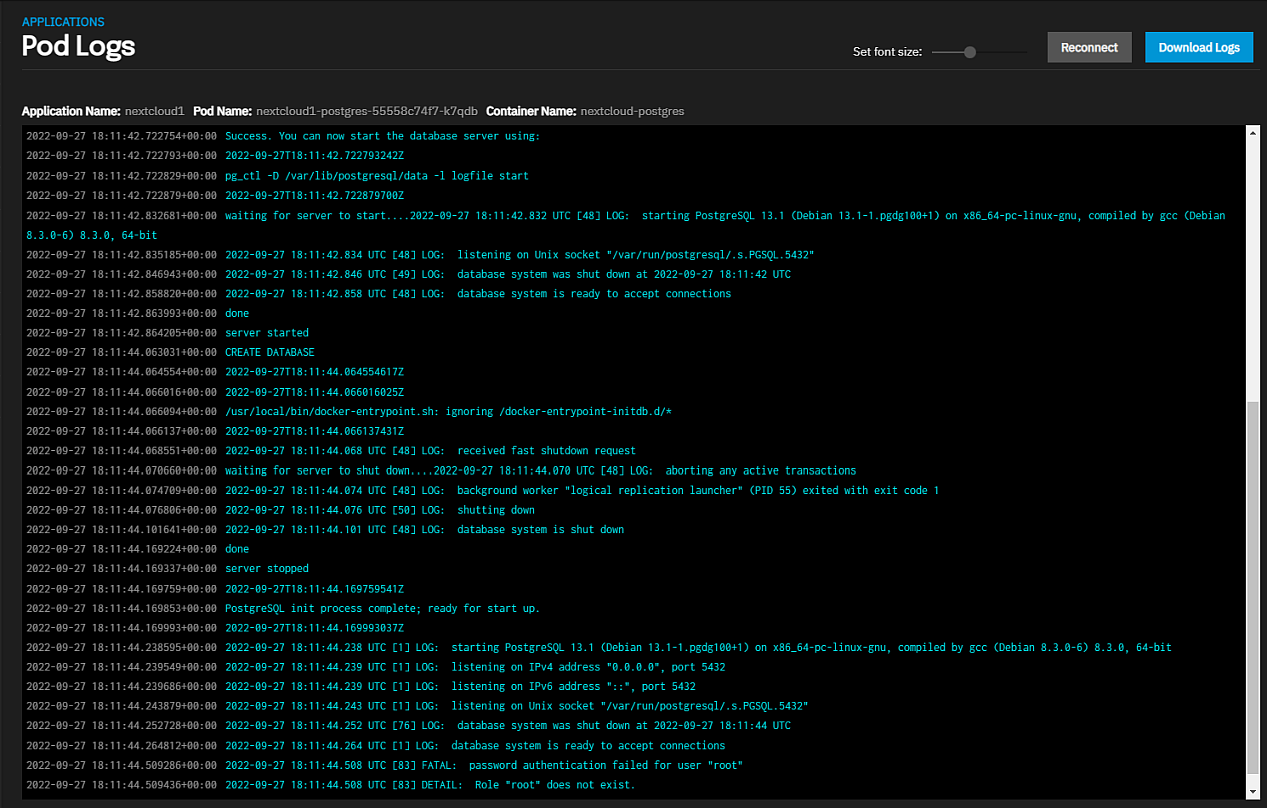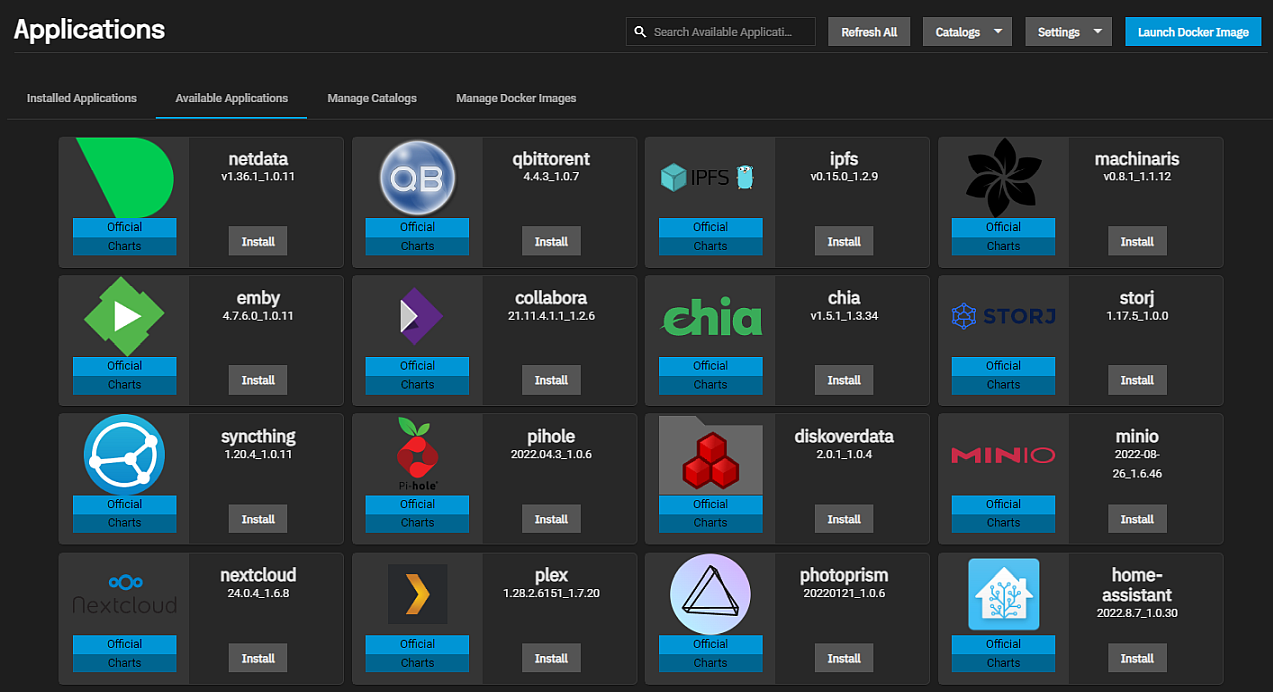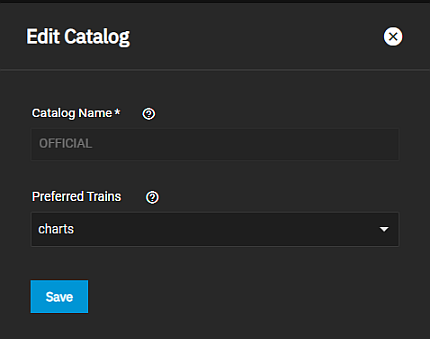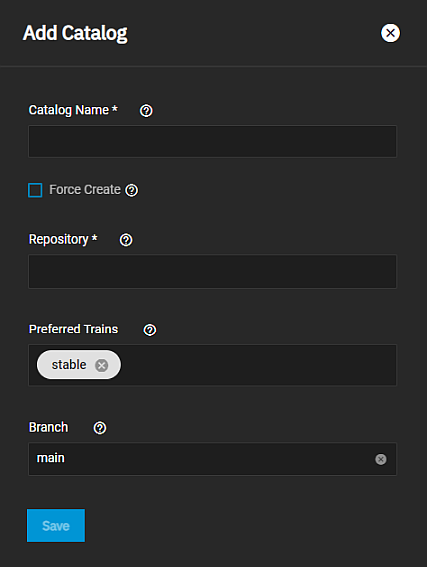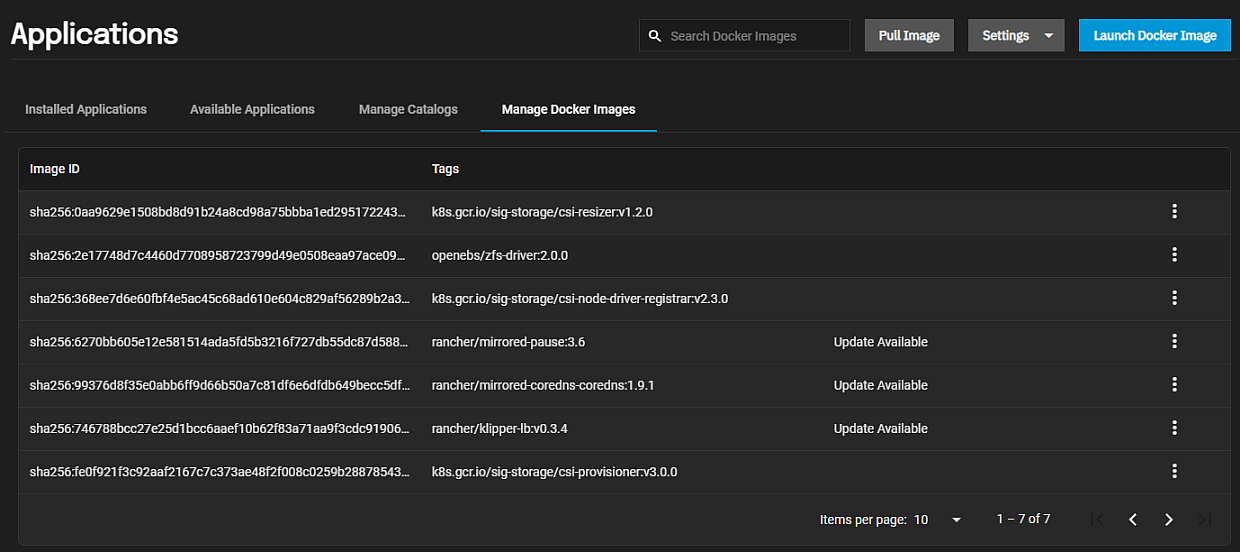TrueNAS SCALE Documentation Archive
This content follows the TrueNAS SCALE 22.12 (Bluefin) releases. Archival documentation is provided for reference only and not actively maintained.
Use the Product and Version selectors above to view content specific to different TrueNAS software or major versions.
Applications Screens
10 minute read.
Last Modified 2023-08-31 13:31 EDTThe Applications screen displays with Installed Applications by default.
The first time you select Apps on the main feature navigation panel, the Applications screen displays the Choose a pool for Apps dialog. Select a pool from the dropdown list, then click Choose to set that pool for application data storage.
The options at the top right of the Applications screen change with the screen tab selected.

The Bulk Action option at the top right of the Installed Applications screen allows you to select more than one or all installed apps on your system. After selecting the apps, use the other action buttons to either Start, Stop, or Delete the selected apps.
Select All places a checkmark in the top left corner of the widget for each installed application. Toggles to Unselect All. Start starts all selected apps and displays the Success dialog for each app after it starts without issue. Stop stops all selected apps and displays a Success dialog for each app after it stops without issue.
The Upgrade option allows you to select multiple apps, and if there are updates available, you can update the apps to the most recent version of the application.
Settings displays at the top right of all four Applications screensand has three options.
Choose Pool opens the Choose a pool window. Advanced Settings opens the Kubernetes Settings configuration screen. Unset Pool opens a dialog confirming the pool is unset.
Selecting Choose Pool on the Settings list opens a different Choose a pool for Apps window than the one that first displays before you add your first application. Use the Settings > Choose Pool option to change the pool .
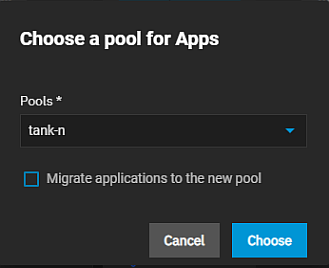
Migrate applications to the new pool starts moving your application data from the existing pool to the new pool specified after you click Choose. Select Migrate applications to the new pool if you change your applications pool and want to migrate data from the existing pool to the new one.
The Advanced Settings option opens the Kubernetes Settings configuration screen.
The Unset Pool option under Settings displays a confirmation dialog. Click UNSET to unset the pool. When complete, a Success dialog displays.
Opens a Refreshing counter showing the refresh options status. When complete, the Task Manager displays the status of each app refresh operation.
Add Catalog at the top of the Manage Catalogs screen opens a warning dialog before it opens the Add Catalog screen.
The Pull Image option at the top right of the Manage Docker Images screen opens the Pull Image screen.
Launch Docker Image opens the Docker Image wizard, where you can configure third-party applications not listed on the Available Applications screen. These docker image options derive from the Kubernetes container options. See Launch Docker Image Screens for more information.
The No Applications Installed screen displays before you install your first application. View Catalog opens the Available Applications screen.
The Choose Pod Shell window lets you choose which pod or active container and shell commands to use when the Applications > Pod Shell screen displays.
The Pod Shell screen allows users to enter TrueNAS CLI commands to access information about their applications.
The Logs option opens the Choose Log window.
The Pod Log shell screen displays the information selected in the Choose Log window.
The Delete dialog for stopped applications includes two confirmation options, a Confirm option and a Delete docker images used by the app option.
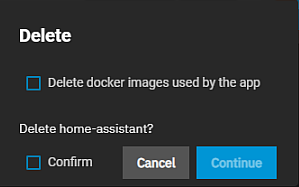
Delete docker images used by the app deletes the docker image the app uses when you delete the app. If you do not delete the image, it remains on the Manage Docker Images list until you delete it.
Confirm activates the Delete button.
The Available Applications screen displays the widgets for all applications in the Official catalog.
The Manage Catalog screen displays the application catalogs installed on TrueNAS SCALE. The Official catalog contains all the applications listed on the Available Applications screen.
The Edit Catalog screen settings specify the name and train the UI should use to look up the catalog and retrieve applications for the catalog.
Opens a Refreshing counter that shows the status of the refresh operation. You can minimize the counter while the process continues.
Opens a confirmation dialog before deleting the catalog. The Official catalog Delete option is inactive. You cannot delete the official catalog.
The Summary option for each catalog listed on Manage Catalogs opens the Name Catalog Summary window where Name is the name of the catalog. The summary displays the catalog status, application, and train, and allows you to select the train and status you want to include in the summary.
The Manage Docker Images button displays a list of Docker image IDs and tags on the system. The list shows Update Available for container images you can update.
Select Update to open the Choose a tag dialog. Select the image tag and click Choose.
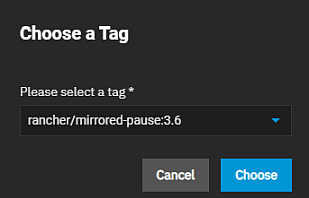
After updating the Docker image, the option becomes inactive until a new update becomes available.
The Delete dialog for images includes a pre-selected radio button for the docker image you selected to delete, a Confirm option and a Force delete option.
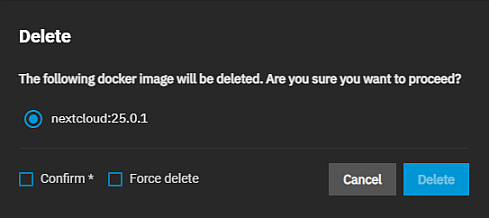
Confirm activates the Delete button.
Force delete adds the force flag to the delete-image operation. Select to avoid issues deleting an image. You can encounter problems if multiple regeistries reference the same Docker image.
For example, you can encounter issues deleting an image if the Docker hub registry and GitHub container registry reference it.


